Sights and Activities
Below are the places we saw and activities completed while visiting Ethiopia:
Addis Ababa
Derg Monument: we walked by this monument that is a painful reminder of the country’s extreme communist rule. The Derg is responsible for many massacres throughout their governing.


Lion of Judah Monument: we encountered many monuments of the lion, the symbol of Ethiopia’s monarchy, but this one in particular was stolen by the Italian’s in 1935 and placed in Rome. After Italy’s failure to colonize Ethiopia, it was eventually returned to Addis Ababa in the 1960s.
Red Terror Martyrs Memorial Museum: this small museum reveals the fall of Emperor Haile Selassie and the horrors of life under Mengistu’s Derg regime, an extreme communist party. The museum was very moving and well laid out. Photos, names, and human remains of the victims put an exclamation point on the dreadful acts committed.

Ethnological Museum: in this interesting museum we viewed exhibits about the different tribes and their rituals from childhood to death, including adulthood, marriage, body scaring, and agriculture. The building where the museum is held was the old emperor’s palace, Haile Selassie, and displayed his bedroom, bathroom, and other rooms used by him.
Yekatit 12 Monument: this monument is commemorated to the thousands of innocent Ethiopians killed by the Italians on February 19, 1937. ‘Yekatit 12’ is a date in the Ethiopian calendar roughly equivalent to February 19.
National Museum: the highlights of this museum are the displays that contain many fossils of some amazing extinct creatures. Amongst the fossils, are two remarkable casts of Lucy, a 3.2-million-year-old, fossilized hominid discovered in 1974. The museum also included a collection of various Christian and secular art, including traditional weapons, jewelry, utensils, clothing, and musical instruments.
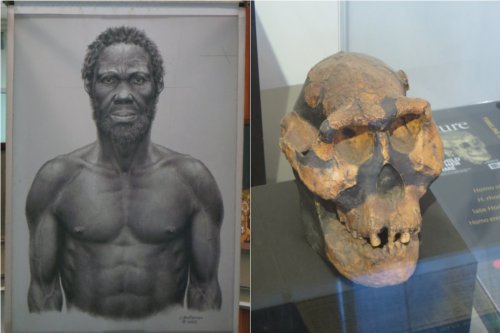
Holy Trinity Cathedral: the second most important Orthodox Christian Cathedral in Ethiopia contains bodies of the last emperors.
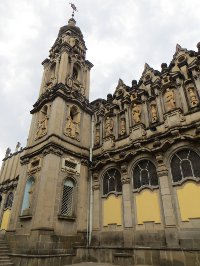

St George Cathedral: commemorate to Emperor Menelik II’s stunning 1896 defeat of the Italians in Adwa. Empress Zewditu (in 1916) and Emperor Haile Selassie (in 1930) were both crowned here.
Fendika Azmari Bet: we enjoyed a great evening in this customary bar complete with traditional azmari music, dancing, and tej (honey wine).
Shashemene
The Rastafari capital of Africa! When Ras Tafari was crowned Emperor Haile Selassie in 1930, he gained followers far beyond his own kingdom. In Jamaica, Marcus Garvey’s ‘return to Africa’ movement saw the emperor’s coronation as fulfilment of the ancient biblical prophecy that ‘Kings will come out of Africa.’ Identifying themselves passionately with Ethiopia’s monarch, as well as with Ethiopia’s status as an independent nation, Garvey’s followers created a new religion. The emperor was bestowed divinity (the Messiah of African Redemption) and the new faith given his pre-coronation name. At the beginning, the emperor was embarrassed of the whole idea, but in 1963, when he overcame his bashfulness, he granted the Rastafarians land in Shashemene. The city was briefly in the news when Bob Marley’s wife announced that she was going to have his remains moved here.
Banana Art Gallery: the single room museum contained Haile Selassie medals and memorabilia, as well as art made from banana leaves.
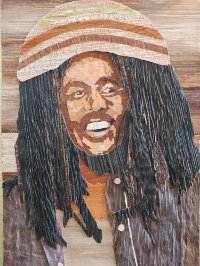
Bale Mountains National Park
We spent two nights amongst the abundant wildlife in this national park. It was unfortunate we did not hike to the Sanetti Plateau to try to see the main attraction of the park, the Ethiopian wolf, but we enjoyed a day hike in the Gaysay Grasslands getting close to much wildlife, including many antelope, warthogs, and the great mountain nyala.

Harar
Shoa Gate Market: also known as the Christian market, we spent hours viewing all the action from our great bird’s-eye-view seats from our hotel.
Harar Gate: one of six gates to Harar old town and the only one that is car-friendly. It is also known as the Duke’s Gate after Ras Makonnen, the first Duke of Harar, who added it in 1889.
Tomb of Sheikh Abadir: the tomb of Harar’s legendary founder and second ruler.
Gidir Magala Market: the city’s main market biggest butchery.
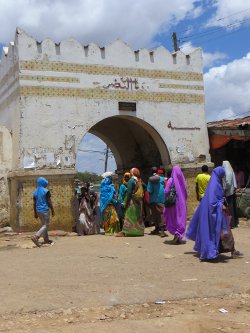
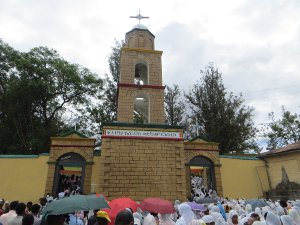
Medhane Alem Cathedral: built by Ras Makonnen on the site of an Egyptian mosque. We were there on a religious holiday that featured many devotees dressed in white.
Jamia Mosque: Harar’s great mosque is the only one inside the walled city big enough to host both men and women. The mosque was built in the 16th century, though locals claim a mosque has stood on the site since the 12th century.
St Mary Catholic Church: one of just two churches in Old Harar, it is a French Catholic mission dating from 1889.
Harari Culture Center: a distinct architectural feature in Old Harar, the gegar (traditional Adare house) is a rectangular, two-story structure with a flat roof. The center was an old house converted into a museum. These types of houses are constructed to remain cool whatever the outside temperature. A small courtyard, usually facing east, is often shared by several families.
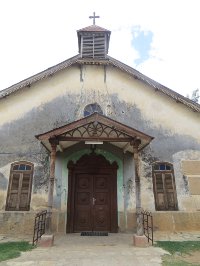
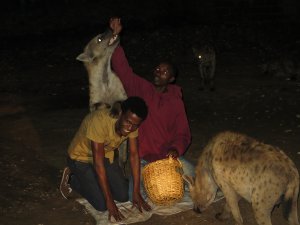
Harar National Museum: small museum featuring items of the surrounding cultures.
Hyena Feeding: a complete adrenaline rush!! Just the thought of being so close to these creatures gave us the chills, but feeding them was a whole another level. Be sure to read our article to learn more about this experience.
Feeding Hyenas
Ras Makonnen’s Palace: this late 19th century building is closed due to renovation, but we were able to view from the exterior.
Ras Tafari’s House – Sherif Harar City Museum: Haile Selassie spent his honeymoon here. The museum contains items of the areas cultures.
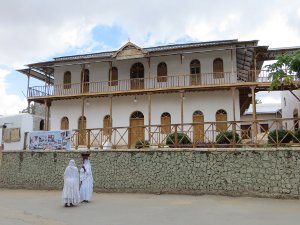
Lalibela
Lalibela’s Rock Hewn Churches and Museum: we could not believe our eyes as we stared at this World Heritage Site. The rock-hewn churches are truly a world wonder. They are all built below ground level and are not just carved into the rock but freed from it. The carvings, both inside and out, are exceptionally detailed. Our favorites included Bet Giyorgis and Bet Abba Libanos.

Saturday Market: this large market was full of people, a little intimidating that we decided to see it from a distance.
Ethiopian Cooking Class at Unique Restaurant: in this small family owned restaurant we learned to make the traditional fastening dish, bayenit, were shown a coffee ceremony, and had a bonus Ethiopian dance lesson. Be sure to read more about our experience and other great unique encounters in our article.
Gondar
Gondar Royal Enclosure: a World Heritage Site full of many castles and palaces, some have been restored and others in ruins.
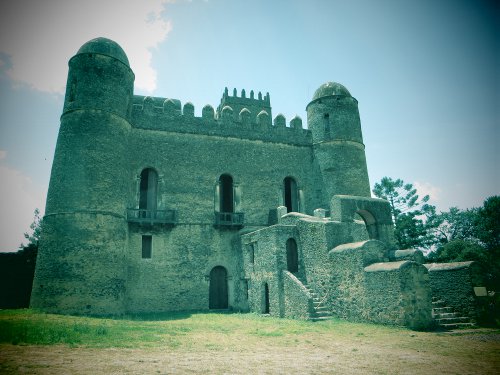
Fasiladas’ Bath: this nice peaceful complex contains a large rectangular pool overlooked by a building believed to be a vacation home. It was likely to have been constructed for religious celebrations and continues to be used in that manner. Once a year, for the Timkat holiday the pool is filled with water and after the water is blessed by a bishop, the pool becomes a riot of splashing water. The ceremony replicates Christ’s baptism in the Jordan River and is one of many reasons to return to Ethiopia.
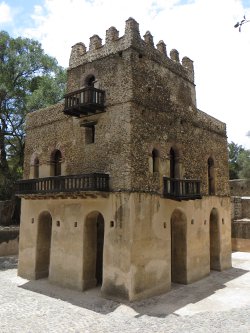

Debre Berhan Selassie Church: claimed to be one of the most beautiful churches in Ethiopia, but we were not as impressed. The frescoes located inside were impressive and very detailed.
Simien Mountains National Park
Five wonderful days being one with nature. Although the trek itself was difficult, one of the tougher itineraries we have attempted, the rewards of mountains peaks, the local children and culture, and the wildlife made it all worth the effort. Be sure to read our article that describes our time in this endangered UNESCO World Heritage Site.
